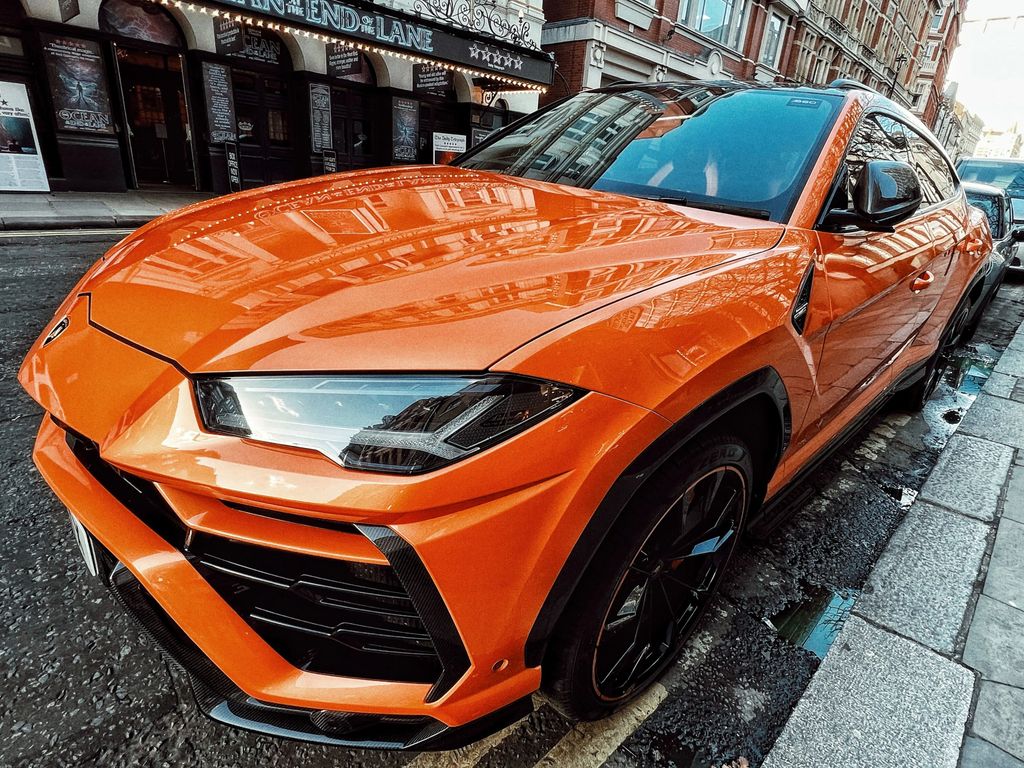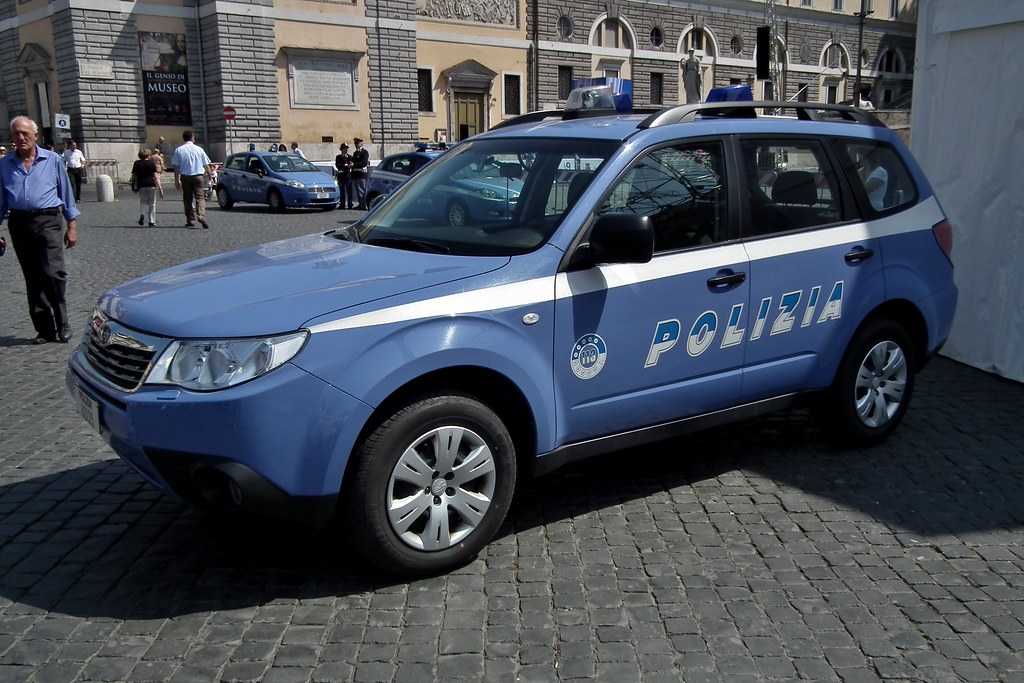
The Subaru Forester has long carved out a significant niche in the American automotive landscape, making its U.S. debut back in 1997. Known for its rugged capability, comfortable design, and all-wheel-drive prowess, it has become an ideal choice for adventurous families seeking practicality and comfort both on and off-road. Its loyal following often praises its safety features, rigid body, and excellent performance in winter conditions. However, even a vehicle with such a strong reputation for dependability isn’t without its challenges, and a closer look reveals a pattern of issues that prospective and current owners should be well aware of.
Our aim here is to provide an objective, data-driven analysis of the most frequently reported problems plagacing the Subaru Forester, drawing directly from owner feedback and expert observations. Understanding these common pitfalls is crucial for making informed decisions, whether you’re considering a purchase or seeking to maintain your current vehicle. We delve into specific features, performance metrics, and real-world user experiences to empower consumers with practical insights. This in-depth look moves beyond general impressions to highlight areas where the Forester has consistently fallen short for some of its owners.
In the spirit of thorough consumer reporting, we will systematically explore the key complaints that have emerged over various model years. From electrical system quirks to mechanical inconsistencies, these issues can range from minor annoyances to significant safety and financial concerns. By shedding light on these areas, we hope to offer a clearer picture of what it truly means to own a Subaru Forester, ensuring you can navigate its strengths and weaknesses with confidence. We begin our examination with six critical issues that have frequently troubled Forester owners.
1. **Cracked Windshields**Since 2015, a notable surge in complaints has emerged regarding Subaru windshields that crack spontaneously, an issue particularly prevalent in models from 2018, 2019, 2020, and 2021. According to Car Problem Zoo, a site dedicated to owner feedback, windshield cracking is the most commonly reported problem for the Forester. Owners describe these cracks and chips appearing seemingly out of nowhere, often starting small before progressively expanding across the glass. Many owners attribute this problem to a design switch to ‘acoustic glass,’ suggesting a potential fragility in its composition or installation.
Adding to owner frustration, Subaru has frequently been reluctant to cover these windshield replacements under warranty, leaving owners to bear significant out-of-pocket expenses. Windshield replacements, particularly for vehicles equipped with advanced driver-assist systems like EyeSight, can be costly. This situation has led to calls for compensation from Subaru, as owners feel they are unfairly burdened with a defect they believe stems from the vehicle’s manufacturing or design. The lack of proactive warranty coverage from the manufacturer exacerbates the problem, turning a material defect into a significant customer service issue.
When faced with a cracked windshield, the only immediate solution for owners is to have it replaced as soon as possible, not only for safety but also to maintain structural integrity and clear visibility. Owners are strongly advised to be persistent in pursuing warranty coverage, escalating their concerns to senior management at dealerships if their initial requests are denied. Documenting the issue and advocating for their rights as consumers is crucial in a situation where the manufacturer has shown reluctance to fully acknowledge the widespread nature of the problem under warranty.
Car Model Information: 2021 Subaru Forester Premium
Name: Subaru Forester
Manufacturer: Subaru
Production: 1997–present
Class: Compact crossover SUV
BodyStyle: SUV
Related: Subaru Impreza
Layout: Front-engine, all-wheel drive
Predecessor: Subaru Bighorn
Categories: 2000s cars, 2010s cars, All-wheel-drive vehicles, All Wikipedia articles written in American English, All articles containing potentially dated statements
Summary: The Subaru Forester (Japanese: スバル・フォレスター, Hepburn: Subaru Foresutā) is a compact crossover SUV that has been manufactured by Subaru since 1997. The first generation was built on the platform of the Impreza in the style of a taller station wagon, a style that continued to the second generation, while the third-generation model onwards moved towards a crossover SUV design. A performance model was available for the second-generation Forester in Japan as the Forester STi.
Get more information about: Subaru Forester
Buying a high-performing used car >>>
Brand: Subaru Model: Forester
Price: $23,147 Mileage: 40,573 mi.
Read more about: Leasing vs. Buying a Car: An In-Depth Financial Guide to Your Next Vehicle Decision

2. **High Oil Consumption**Excessive oil consumption stands out as the #1 worst complaint for the Subaru Forester on CarComplaints.com, primarily due to the high cost of repairs and the relatively low mileage at which the problem typically manifests. This issue has been widely reported on models from 2011 all the way up to 2015, affecting vehicles with both the 2.0L and 2.5L engines. For many owners, it’s a frustrating and costly recurring problem that significantly impacts their ownership experience and the vehicle’s long-term reliability.
Owners frequently report having to add a quart or two of oil between scheduled changes, sometimes as often as every 1,000 miles. While Subaru has, in some instances, attempted to argue that such oil consumption falls within “normal specifications,” consumer data and owner experiences strongly contradict this claim. Burning a quart of oil every 1,000 miles is far from normal for a modern engine and indicates a deeper underlying issue. This ongoing need for frequent oil top-offs can become a significant inconvenience and expense, detracting from the perceived reliability of the vehicle.
The problem typically occurs around the 30,000-mile mark, a relatively low mileage for such a significant engine issue, and can incur repair costs averaging around $2,000. Such expenses, particularly for a problem that can stem from manufacturing defects, have led to significant dissatisfaction among owners. Ignoring excessive oil consumption can lead to severe engine damage, including engine failure, underscoring the critical need for owners to regularly monitor their oil levels. Recalls have been issued for this issue, and owners are encouraged to run a VIN check on their Forester to determine if their vehicle is affected.
Addressing high oil consumption often necessitates extensive engine work, with solutions potentially ranging from significant engine repairs to a complete engine replacement. This makes it one of the most financially impactful complaints for Forester owners. Given the serious nature and cost associated with this problem, proactive engagement with dealerships and thorough investigation of recall eligibility are essential. The issue highlights a need for robust quality control and transparent communication from the manufacturer regarding engine durability.
Car Model Information: 2021 Subaru Forester Premium
Name: Subaru Forester
Manufacturer: Subaru
Production: 1997–present
Class: Compact crossover SUV
BodyStyle: SUV
Related: Subaru Impreza
Layout: Front-engine, all-wheel drive
Predecessor: Subaru Bighorn
Categories: 2000s cars, 2010s cars, All-wheel-drive vehicles, All Wikipedia articles written in American English, All articles containing potentially dated statements
Summary: The Subaru Forester (Japanese: スバル・フォレスター, Hepburn: Subaru Foresutā) is a compact crossover SUV that has been manufactured by Subaru since 1997. The first generation was built on the platform of the Impreza in the style of a taller station wagon, a style that continued to the second generation, while the third-generation model onwards moved towards a crossover SUV design. A performance model was available for the second-generation Forester in Japan as the Forester STi.
Get more information about: Subaru Forester
Buying a high-performing used car >>>
Brand: SUBARU Model: FORESTER
Price: $23,147 Mileage: 40,573 mi.
Read more about: Beyond the Silent Killer: Crucial High Blood Pressure Warning Signs Starting in Your Neck You Can’t Afford to Miss
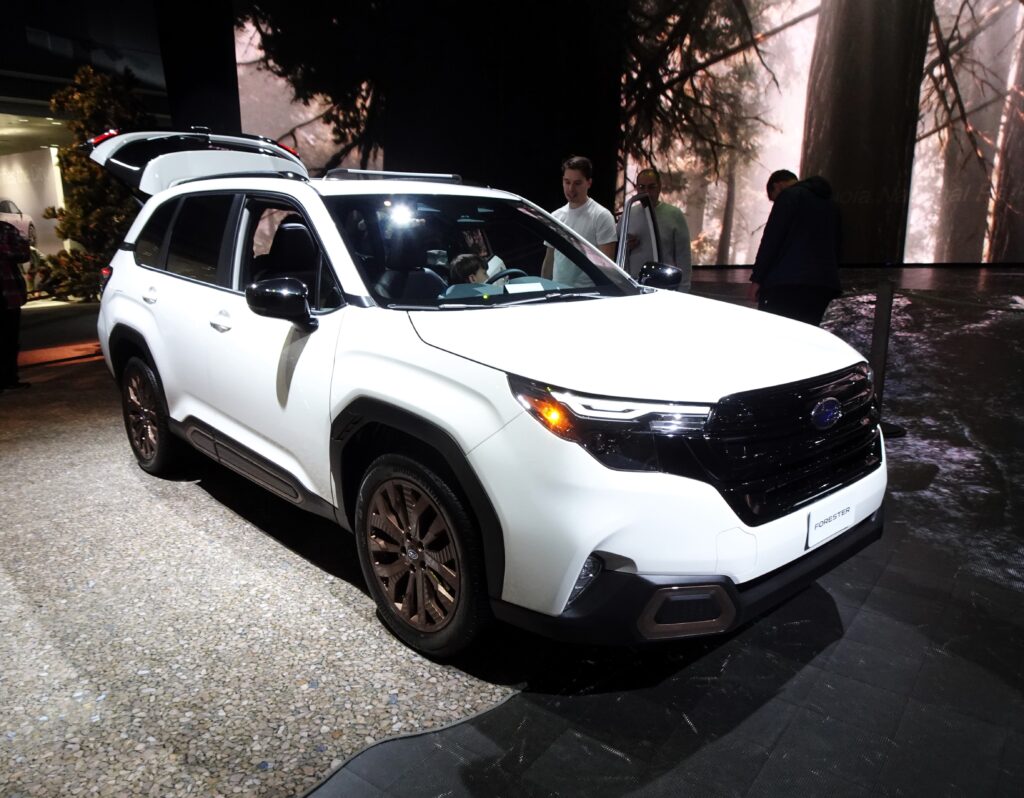
3. **Stalling**Stalling issues have been a commonly reported problem for the Subaru Forester across numerous model years, presenting a significant safety concern for drivers. These incidents often involve the vehicle suddenly losing all power, sometimes while driving at high speeds, which can place occupants in extremely dangerous situations. While some stalling incidents are likely linked to the previously discussed excessive oil consumption, it is by no means the sole cause, indicating a multi-faceted problem within the Forester’s engine and fuel systems.
One particularly alarming owner’s account describes driving on the interstate at 75 mph when their car suddenly acted “like I was on ice and shut down.” The driver reported that they pressed the accelerator pedal, but “NOTHING!!” happened, leaving them stranded in the passing lane amidst heavy traffic. Such experiences underscore the critical safety implications of unexpected stalling, as these events could potentially lead to fatal accidents for the driver and others on the road. The unpredictability and severity of these incidents make stalling a deeply unsettling issue for Forester owners.
Potential causes for stalling include the failure of tumble generators on the air intake manifold and worn-out fuel lines. Tumble generators are crucial components designed to improve the air/fuel mixture by making incoming air turbulent, optimizing combustion. When these fail, the engine’s ability to maintain a consistent fuel-air ratio is compromised, leading to performance issues and potential stalling. Similarly, compromised fuel lines can disrupt fuel delivery, causing the engine to sputter and die. These causes, however, can be model year specific, emphasizing the importance for owners to check for any relevant recalls.
Given the serious safety risks associated with stalling, immediate diagnosis and repair are paramount. Owners experiencing these issues should consult their dealership without delay and ensure all recall information pertinent to their vehicle’s model year is investigated. Addressing these underlying mechanical failures is critical not only for vehicle performance but, more importantly, for the safety and peace of mind of Forester drivers. Prompt and accurate resolution helps restore confidence in the vehicle’s reliability.
Car Model Information: 2021 Subaru Forester Premium
Name: Subaru Forester
Manufacturer: Subaru
Production: 1997–present
Class: Compact crossover SUV
BodyStyle: SUV
Related: Subaru Impreza
Layout: Front-engine, all-wheel drive
Predecessor: Subaru Bighorn
Categories: 2000s cars, 2010s cars, All-wheel-drive vehicles, All Wikipedia articles written in American English, All articles containing potentially dated statements
Summary: The Subaru Forester (Japanese: スバル・フォレスター, Hepburn: Subaru Foresutā) is a compact crossover SUV that has been manufactured by Subaru since 1997. The first generation was built on the platform of the Impreza in the style of a taller station wagon, a style that continued to the second generation, while the third-generation model onwards moved towards a crossover SUV design. A performance model was available for the second-generation Forester in Japan as the Forester STi.
Get more information about: Subaru Forester
Buying a high-performing used car >>>
Brand: Subaru Model: Forester
Price: $23,147 Mileage: 40,573 mi.
Read more about: Beyond the Showroom Floor: Decoding the 13 Secrets of Iconic Engine Sounds and Their Physics

4. **Passenger Airbag Not Working**For Subaru Forester models manufactured between approximately 2015 and 2018, numerous complaints have been lodged regarding malfunctions with the passenger airbag system. These issues are not merely minor glitches but represent serious safety concerns that compromise the protective capabilities of the vehicle. Common symptoms reported by owners include the passenger airbag indicator turning off, an Airbag/SRS notification light indicating that the airbag is ‘OFF,’ and the display screen explicitly stating “PASSENGER AIRBAG OFF.” In some critical instances, the vehicle’s sensor system fails to accurately detect when a passenger is seated, rendering the airbag inoperable.
These complaints take on added gravity when considering the broader context of the widespread Takata airbag inflator recalls. A significant number of Subaru vehicles have been part of these massive recalls due to dangerous airbag inflators that can hurl shrapnel upon deployment. While the Forester complaints specifically mention the airbag *not working* rather than deploying dangerously, the general crisis surrounding airbag safety has heightened owner awareness and concern. Subaru has, at times, faced criticism for being slow to address these problems on owners’ vehicles, with delays potentially stemming from a huge backlog of airbag-related recalls and repairs across the industry. This sluggish response further compounds owner anxiety regarding vehicle safety.
The solution for any airbag-related issue is unequivocally to have it addressed by a certified dealership. Attempting to tamper with airbags can not only void a vehicle’s warranty but is also inherently dangerous due to the explosive components within the system. Dealerships possess the specialized knowledge, tools, and replacement parts required to correctly diagnose and repair these complex safety systems. Owners experiencing these symptoms must schedule service immediately to ensure the safety integrity of their vehicle, preventing a critical safety feature from failing in an accident.
Car Model Information: 2021 Subaru Forester Premium
Name: Subaru Forester
Manufacturer: Subaru
Production: 1997–present
Class: Compact crossover SUV
BodyStyle: SUV
Related: Subaru Impreza
Layout: Front-engine, all-wheel drive
Predecessor: Subaru Bighorn
Categories: 2000s cars, 2010s cars, All-wheel-drive vehicles, All Wikipedia articles written in American English, All articles containing potentially dated statements
Summary: The Subaru Forester (Japanese: スバル・フォレスター, Hepburn: Subaru Foresutā) is a compact crossover SUV that has been manufactured by Subaru since 1997. The first generation was built on the platform of the Impreza in the style of a taller station wagon, a style that continued to the second generation, while the third-generation model onwards moved towards a crossover SUV design. A performance model was available for the second-generation Forester in Japan as the Forester STi.
Get more information about: Subaru Forester
Buying a high-performing used car >>>
Brand: SUBARU Model: FORESTER
Price: $23,147 Mileage: 40,573 mi.
Read more about: Unleashing the Giants: 15 Cargo Vans Delivering Unrivaled Space and Power for Your Business Needs
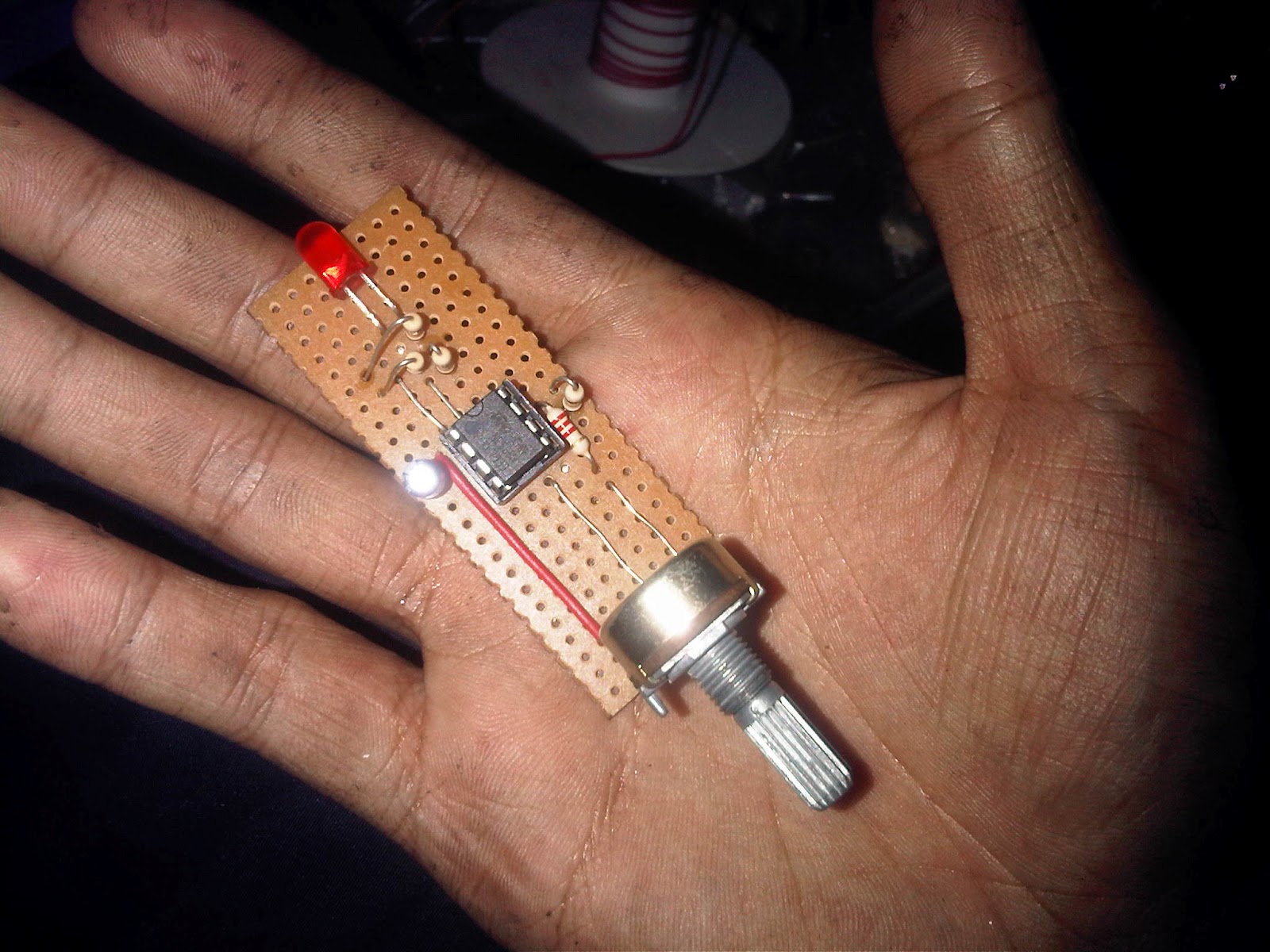
5. **Cracked Oxygen Sensor**On Repair Pal, a leading resource for vehicle reliability and common problems, the most frequently reported issue for the Subaru Forester is a failed front oxygen sensor. This problem typically manifests when the oxygen sensor develops a crack, leading directly to the illumination of the check engine light on the dashboard. While not always immediately debilitating to the vehicle’s operation, a faulty oxygen sensor is a clear indicator of an emissions control system issue that can impact performance and fuel efficiency over time.
The oxygen (O2) sensor plays a pivotal role in the vehicle’s engine management system. Its primary function is to measure the amount of unburned oxygen in the exhaust gas and relay this information to the car’s computer. This data allows the engine control unit (ECU) to determine if the fuel mix is too lean (too much oxygen) or too rich (not enough oxygen). Knowing the precise ratio of fuel to air enables the engine to make necessary adjustments to ensure optimal combustion, maintain smooth running, and minimize harmful emissions. A cracked sensor provides inaccurate readings, hindering the engine’s ability to operate efficiently.
Subaru has acknowledged issues with these components by recalling various models to replace sensors that may be prone to failure. Therefore, owners who suspect this problem should first take their Forester to a dealership to inquire if the repair can be covered under warranty or as part of a recall. For those who are mechanically inclined and wish to confirm the issue themselves, running a diagnostics check with an OBD2 scanner can reveal specific error codes related to the O2 sensor. Once the problem is confirmed, replacing the sensor is the typical solution, although in some cases, the idle control valve may also need replacement to fully resolve related engine performance issues. Addressing this promptly ensures proper engine function and helps avoid further complications.
Car Model Information: 2021 Subaru Forester Premium
Name: Subaru Forester
Manufacturer: Subaru
Production: 1997–present
Class: Compact crossover SUV
BodyStyle: SUV
Related: Subaru Impreza
Layout: Front-engine, all-wheel drive
Predecessor: Subaru Bighorn
Categories: 2000s cars, 2010s cars, All-wheel-drive vehicles, All Wikipedia articles written in American English, All articles containing potentially dated statements
Summary: The Subaru Forester (Japanese: スバル・フォレスター, Hepburn: Subaru Foresutā) is a compact crossover SUV that has been manufactured by Subaru since 1997. The first generation was built on the platform of the Impreza in the style of a taller station wagon, a style that continued to the second generation, while the third-generation model onwards moved towards a crossover SUV design. A performance model was available for the second-generation Forester in Japan as the Forester STi.
Get more information about: Subaru Forester
Buying a high-performing used car >>>
Brand: Subaru Model: Forester
Price: $23,147 Mileage: 40,573 mi.
Read more about: The Roadblock Rundown: 12 Common Reasons Your Custom Classic Car Build Might Fail Inspection – And How to Ace It
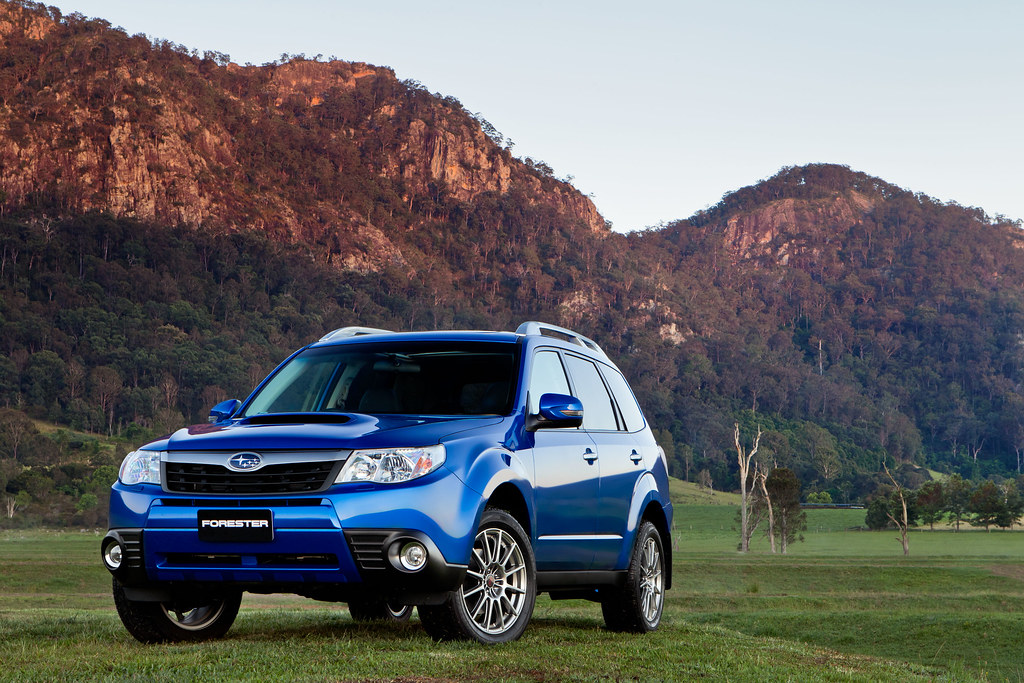
6. **Catalytic Converter Failure**The second most commonly reported problem on Repair Pal for the Subaru Forester concerns the catalytic converter, a vital component of the exhaust system. The specific issue often reported is a low efficiency of the catalytic converter, meaning that it is not effectively performing its function of converting pollutant gases into less harmful ones. This directly results in higher levels of pollutants being discharged into the environment, which is not only an ecological concern but also a practical one for vehicle owners.
This problem is almost universally accompanied by the illumination of the check engine light, providing a clear visual cue to the driver that an issue exists within the emissions system. Beyond the environmental impact, a failing catalytic converter can have tangible consequences for vehicle owners, particularly in states where smog tests are a mandatory requirement. In such regions, a Forester with low catalytic converter efficiency could well fail the emissions test, preventing owners from renewing their vehicle registration. This issue has been noted on Forester models spanning a wide range of production years, from 2000 all the way up to 2014, indicating a long-standing pattern of vulnerability in this component.
Although a failing catalytic converter may not immediately affect the day-to-day operation or driveability of the car in a profound way, addressing this problem is crucial for environmental responsibility and compliance with emissions regulations. Owners should take their car into the dealership for diagnosis and repair. In most cases, a new catalytic converter will be required, which can be an expensive repair, often costing upwards of $1,000. However, depending on the vehicle’s age and mileage, it may be possible for the replacement to be covered under an emissions warranty, offering a potential relief from the significant financial burden. Prompt action ensures both legal compliance and environmental stewardship.
Continuing our comprehensive examination of the Subaru Forester, we now turn our attention to the remaining significant complaints that owners frequently report. These issues, ranging from persistent engine integrity problems to modern technological glitches, further paint a detailed picture of the challenges some Forester owners face. Understanding these concerns is vital for anyone considering this popular SUV or for current owners seeking to prolong its lifespan and address common pitfalls effectively.
Car Model Information: 2021 Subaru Forester Premium
Name: Subaru Forester
Manufacturer: Subaru
Production: 1997–present
Class: Compact crossover SUV
BodyStyle: SUV
Related: Subaru Impreza
Layout: Front-engine, all-wheel drive
Predecessor: Subaru Bighorn
Categories: 2000s cars, 2010s cars, All-wheel-drive vehicles, All Wikipedia articles written in American English, All articles containing potentially dated statements
Summary: The Subaru Forester (Japanese: スバル・フォレスター, Hepburn: Subaru Foresutā) is a compact crossover SUV that has been manufactured by Subaru since 1997. The first generation was built on the platform of the Impreza in the style of a taller station wagon, a style that continued to the second generation, while the third-generation model onwards moved towards a crossover SUV design. A performance model was available for the second-generation Forester in Japan as the Forester STi.
Get more information about: Subaru Forester
Buying a high-performing used car >>>
Brand: Subaru Model: Forester
Price: $23,147 Mileage: 40,573 mi.
Read more about: Navigating the Nightmare: The 12 Worst States for Modified Car Enthusiasts

7. **Head Gasket Failure**A long-standing and unfortunately common complaint associated with Subaru models, especially from the late 1990s through the early 2010s, is persistent head gasket failure. This issue predominantly affected Forester models from 1998 to 2011, alongside other Subaru vehicles equipped with 2.5L four-cylinder engines. The recurrent nature of this problem in older generations has led many to question Subaru’s consistency in addressing this fundamental engine component.
A head gasket is a critical seal situated between the engine block and the cylinder head. Its primary role is to seal the combustion gases within the cylinders, ensuring optimal engine compression, and to prevent the intermixing of coolant or engine oil. When this gasket fails, it can lead to oil leaks, coolant leaks, or even internal engine damage if combustion gases leak into the cooling system, manifesting as overheating or a loss of power.
The financial implications of a head gasket failure are substantial, with repair costs typically ranging between $1,800 and $2,000. This is largely due to the labor-intensive process, which often requires the entire engine to be removed from the vehicle for access. Such a significant expense, coupled with the potential for repeat failures in some instances, has been a major source of frustration and dissatisfaction among affected owners.
Subaru did acknowledge the widespread nature of this issue by extending the warranty on a number of vehicles previously affected. For prospective buyers of used Forester models from this era, it is absolutely crucial to investigate service records to confirm if the head gasket has been replaced, ideally with an upgraded component, to avoid inheriting a potentially costly problem.
Car Model Information: 2021 Subaru Forester Premium
Name: Subaru Forester
Manufacturer: Subaru
Production: 1997–present
Class: Compact crossover SUV
BodyStyle: SUV
Related: Subaru Impreza
Layout: Front-engine, all-wheel drive
Predecessor: Subaru Bighorn
Categories: 2000s cars, 2010s cars, All-wheel-drive vehicles, All Wikipedia articles written in American English, All articles containing potentially dated statements
Summary: The Subaru Forester (Japanese: スバル・フォレスター, Hepburn: Subaru Foresutā) is a compact crossover SUV that has been manufactured by Subaru since 1997. The first generation was built on the platform of the Impreza in the style of a taller station wagon, a style that continued to the second generation, while the third-generation model onwards moved towards a crossover SUV design. A performance model was available for the second-generation Forester in Japan as the Forester STi.
Get more information about: Subaru Forester
Buying a high-performing used car >>>
Brand: Subaru Model: Forester
Price: $23,147 Mileage: 40,573 mi.
Read more about: Driving Strong Past 150,000 Miles: 10 Transmission Traps to Avoid for Truck Longevity

8. **Battery Drain Problems**A relatively newer, yet equally frustrating, complaint for Subaru Forester owners, particularly those with models from around 2019 onwards, involves batteries that frequently die. This isn’t necessarily due to defective batteries but rather a systemic issue related to the vehicle’s electrical architecture, specifically the CAN (Controller Area Network) system’s parasitic drain. This problem can leave owners stranded, requiring jump-starts or roadside assistance, despite having relatively new batteries.
The core of the problem lies in the vehicle’s electrical system, which continuously draws power even when the car is turned off. The factory-installed batteries, while not inherently faulty, often lack the sufficient capacity to handle this ongoing electrical demand over extended periods. Owners report waking up to dead batteries after their Forester has sat overnight or for a few days, a clear indication of this persistent parasitic draw.
Such incidents create immense inconvenience and can escalate into significant expenses for repeated battery replacements or call-outs for assistance. One owner vividly described being stranded, noting that even the tow truck driver commented on the frequency of this issue with Subarus. This anecdotal evidence underscores the widespread nature of the problem, indicating it’s not an isolated occurrence but a recognized flaw impacting numerous vehicles.
While temporary solutions like jump-starting or using a trickle charger are often suggested, they are far from ideal for a modern vehicle. Some dealerships have even advised owners to drive their car for at least 30 minutes every five days to maintain battery charge. Ultimately, a more robust and reliable battery system, or a fundamental revision to the electrical system’s power management, is needed to permanently resolve this unnecessary source of owner frustration.
Car Model Information: 2021 Subaru Forester Premium
Name: Subaru Forester
Manufacturer: Subaru
Production: 1997–present
Class: Compact crossover SUV
BodyStyle: SUV
Related: Subaru Impreza
Layout: Front-engine, all-wheel drive
Predecessor: Subaru Bighorn
Categories: 2000s cars, 2010s cars, All-wheel-drive vehicles, All Wikipedia articles written in American English, All articles containing potentially dated statements
Summary: The Subaru Forester (Japanese: スバル・フォレスター, Hepburn: Subaru Foresutā) is a compact crossover SUV that has been manufactured by Subaru since 1997. The first generation was built on the platform of the Impreza in the style of a taller station wagon, a style that continued to the second generation, while the third-generation model onwards moved towards a crossover SUV design. A performance model was available for the second-generation Forester in Japan as the Forester STi.
Get more information about: Subaru Forester
Buying a high-performing used car >>>
Brand: SUBARU Model: FORESTER
Price: $23,147 Mileage: 40,573 mi.
Read more about: The 14 Best Free Apps for Finding Public EV Chargers
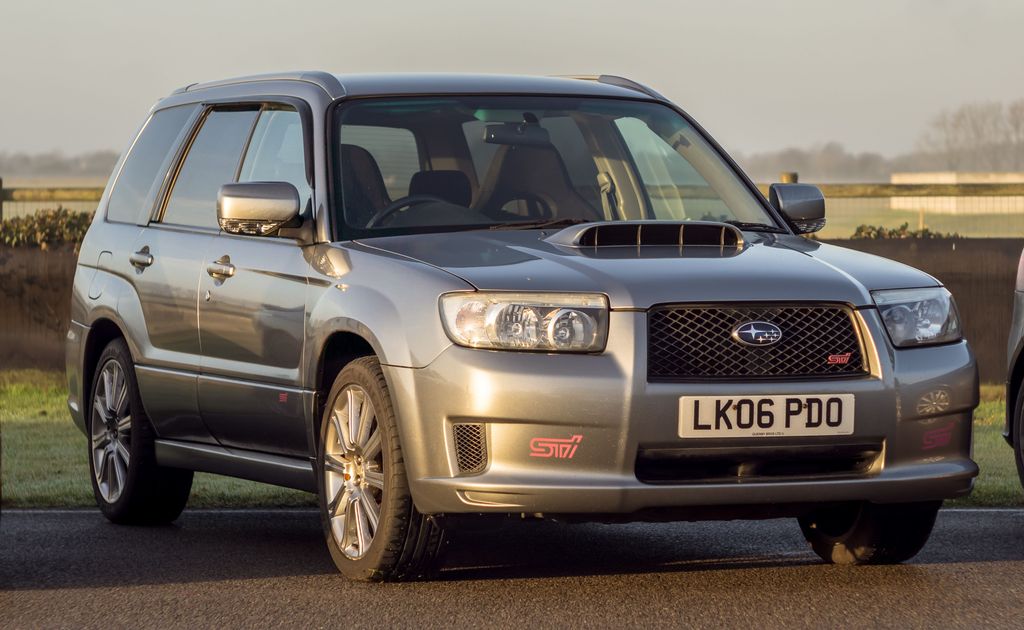
9. **Issues with the Power Tailgate**For many Subaru Forester owners, the convenience of a power tailgate can quickly turn into a source of aggravation when it malfunctions. This issue has been reported across various model years, though it appears to be more common in newer Foresters. Owners describe scenarios where the rear hatch simply won’t open when the car is turned on, or they hear three distinct beeps without the tailgate engaging, leaving them puzzled and frustrated.
One common, and often overlooked, reason for the tailgate’s refusal to open is directly related to the vehicle’s locking system. If the car doors were locked while the engine was running, the rear gate often remains locked as well, preventing it from opening via the exterior button or interior release. A simple press of the unlock button, ensuring all doors are disengaged, can frequently resolve this particular scenario.
Beyond simple user oversight, some issues necessitate a deeper look, often requiring consultation of the owner’s manual. One owner shared a valuable tip discovered within the manual concerning “Initialization of rear gate” procedures. This involves specific steps, such as continuously pressing the rear gate opener button until it unlocks, then manually lifting it, which can sometimes reset the system’s operation.
For more persistent or unexplained malfunctions, a basic electrical reset can sometimes clear minor glitches. Disconnecting the cable from the 12V battery for approximately 30 seconds can act as a rudimentary reset for the vehicle’s electrical components, potentially restoring normal operation to the power tailgate. However, if problems continue, a dealership visit is recommended to diagnose any underlying mechanical or electrical faults.
Car Model Information: 2021 Subaru Forester Premium
Name: Subaru Forester
Manufacturer: Subaru
Production: 1997–present
Class: Compact crossover SUV
BodyStyle: SUV
Related: Subaru Impreza
Layout: Front-engine, all-wheel drive
Predecessor: Subaru Bighorn
Categories: 2000s cars, 2010s cars, All-wheel-drive vehicles, All Wikipedia articles written in American English, All articles containing potentially dated statements
Summary: The Subaru Forester (Japanese: スバル・フォレスター, Hepburn: Subaru Foresutā) is a compact crossover SUV that has been manufactured by Subaru since 1997. The first generation was built on the platform of the Impreza in the style of a taller station wagon, a style that continued to the second generation, while the third-generation model onwards moved towards a crossover SUV design. A performance model was available for the second-generation Forester in Japan as the Forester STi.
Get more information about: Subaru Forester
Buying a high-performing used car >>>
Brand: Subaru Model: Forester
Price: $23,147 Mileage: 40,573 mi.
Read more about: 2025 SUVs with Full-Size Spares: Your Guide to Uncompromised Preparedness

10. **CVT Transmission Shuddering**Subaru’s Lineartronic Continuously Variable Transmission (CVT), once lauded for its smooth operation, has unfortunately become a significant point of contention for many Forester owners, particularly those with 2012-2017 models. The problem manifests as a range of unsettling driving characteristics, including shuddering, jerking, and vibrations, indicating underlying issues with the transmission’s reliability over time.
Owners have reported various forms of this disconcerting behavior. These symptoms include noticeable hesitation at different speeds, sudden lunges forward on the freeway, random jerks or shutters, and even surging forward during low-speed maneuvers like parking or taking off. Furthermore, drivers have experienced shuddering when accelerating, bucking at low speeds, and even shaking when the vehicle is idling or braking, significantly detracting from the driving experience.
These widespread issues have been predominantly linked to the CVT itself, leading to a substantial online community of “disgruntled customers” sharing their experiences. In extreme cases, the transmission’s hesitation has been severe enough to cause the engine to stall. This pervasive problem led Subaru to extend warranties on affected vehicles, acknowledging the manufacturing flaws or design shortcomings.
Despite Subaru’s warranty extensions and the availability of recalls and software updates to address the issue, owner feedback suggests that dealership responses haven’t always been satisfactory. Reports indicate instances where customers were dismissively told, “it’s just the way the car drives,” an unacceptable response for such a critical component. For those considering older Forester models, thorough checks of the transmission’s service history and any recall compliance are absolutely essential.
Car Model Information: 2021 Subaru Forester Premium
Name: Subaru Forester
Manufacturer: Subaru
Production: 1997–present
Class: Compact crossover SUV
BodyStyle: SUV
Related: Subaru Impreza
Layout: Front-engine, all-wheel drive
Predecessor: Subaru Bighorn
Categories: 2000s cars, 2010s cars, All-wheel-drive vehicles, All Wikipedia articles written in American English, All articles containing potentially dated statements
Summary: The Subaru Forester (Japanese: スバル・フォレスター, Hepburn: Subaru Foresutā) is a compact crossover SUV that has been manufactured by Subaru since 1997. The first generation was built on the platform of the Impreza in the style of a taller station wagon, a style that continued to the second generation, while the third-generation model onwards moved towards a crossover SUV design. A performance model was available for the second-generation Forester in Japan as the Forester STi.
Get more information about: Subaru Forester
Buying a high-performing used car >>>
Brand: Subaru Model: Forester
Price: $23,147 Mileage: 40,573 mi.
Read more about: Buyer’s Remorse on Wheels: The 15 Vehicles That Left Owners Longing for a Do-Over
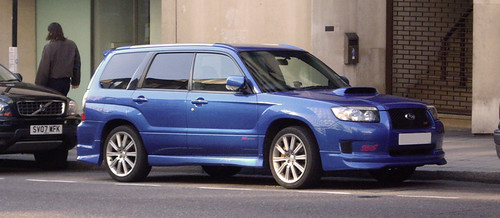
11. **EyeSight Driver-Assist System Glitches**Subaru’s EyeSight driver-assist technology, designed to enhance safety through features like adaptive cruise control and automatic emergency braking, has been a cornerstone of the brand’s safety reputation. However, numerous Forester owners have reported glitches, describing the system as occasionally “falling asleep on the job,” particularly under challenging environmental conditions. This unreliability can undermine driver confidence and compromise expected safety benefits.
The most common complaints revolve around the EyeSight system deactivating unexpectedly during inclement weather. Drivers frequently report instances where the system goes offline in heavy rain, even when windshield wipers are operating at full speed. Similar deactivations occur in foggy or frosty conditions, especially if the windshield hasn’t fully cleared. Obstructed camera lenses due to dirt, ice, or condensation are also frequent culprits, triggering the system to become temporarily unavailable.
When EyeSight deactivates, critical functions such as adaptive cruise control and automatic emergency braking cease to operate, leaving drivers without the expected assistance. In some cases, even standard cruise control may become unavailable. While Subaru’s owner manuals do document these limitations, many drivers, particularly those accustomed to EyeSight’s more resilient performance in earlier models, are caught off guard by its sensitivity to weather and visibility.
Given that EyeSight is often perceived as a “bulky and overly expensive upgrade” on higher trim levels, its intermittent reliability is particularly frustrating. Owners are advised to understand these limitations fully and not rely solely on the system in adverse conditions. Regular cleaning of the camera lenses and ensuring clear windshield visibility are practical steps, while checking with dealerships for any relevant software updates is also recommended to mitigate these glitches.
Car Model Information: 2021 Subaru Forester Premium
Name: Subaru Forester
Manufacturer: Subaru
Production: 1997–present
Class: Compact crossover SUV
BodyStyle: SUV
Related: Subaru Impreza
Layout: Front-engine, all-wheel drive
Predecessor: Subaru Bighorn
Categories: 2000s cars, 2010s cars, All-wheel-drive vehicles, All Wikipedia articles written in American English, All articles containing potentially dated statements
Summary: The Subaru Forester (Japanese: スバル・フォレスター, Hepburn: Subaru Foresutā) is a compact crossover SUV that has been manufactured by Subaru since 1997. The first generation was built on the platform of the Impreza in the style of a taller station wagon, a style that continued to the second generation, while the third-generation model onwards moved towards a crossover SUV design. A performance model was available for the second-generation Forester in Japan as the Forester STi.
Get more information about: Subaru Forester
Buying a high-performing used car >>>
Brand: Subaru Model: Forester
Price: $23,147 Mileage: 40,573 mi.
Read more about: Drove it Regretted it: 12 Compact Models That Made Owners Question Their Judgment on the First Commute.
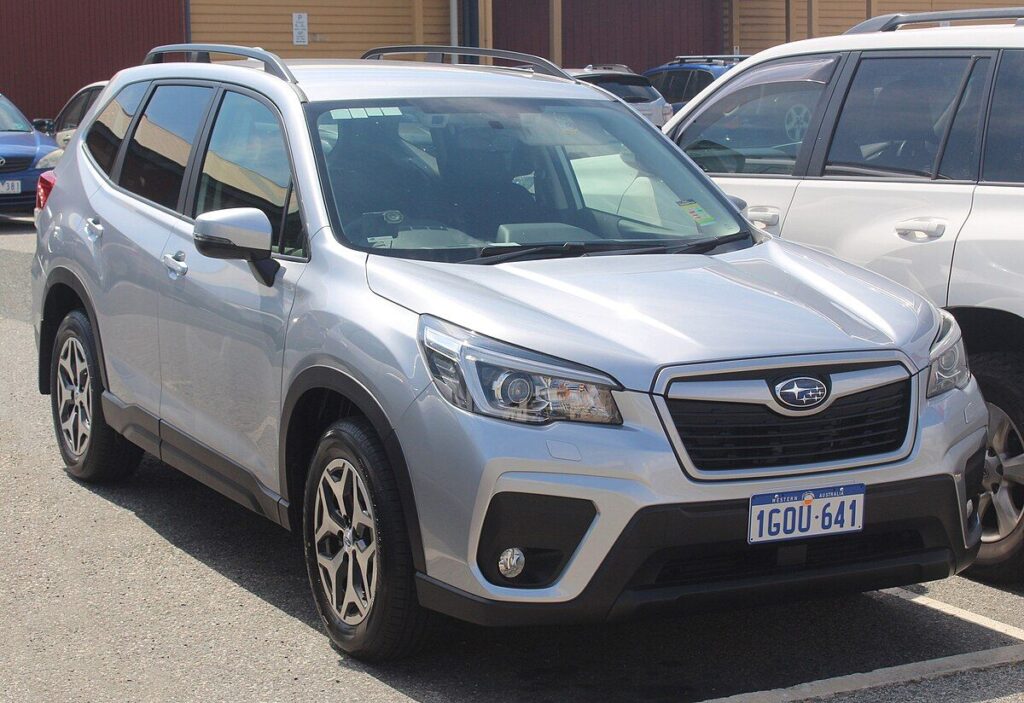
12. **Rust and Corrosion Problems**While it might seem unfair to single out cold-weather vehicles for corrosion issues, the extent of rust and corrosion problems reported by Subaru Forester owners, particularly in regions where roads are salted during winter, indicates a deeper concern than mere environmental exposure. This issue extends beyond superficial blemishes, affecting critical structural areas and raising questions about the vehicle’s long-term durability in such climates.
The problem often manifests in specific, vulnerable areas of the Forester’s body. Owners frequently report significant rust developing in wheel wells, rocker panels, and along the undercarriage. This widespread corrosion is not just an aesthetic concern; it can compromise the structural integrity of the vehicle over time, potentially leading to more severe issues and costly repairs if left unaddressed.
Notably, older models, particularly those from the 2000s era, including the Forester and Outback, are “infamous for this” susceptibility to rust. This suggests a historical pattern of vulnerability, leading many owners to express a wish that Subaru had implemented more robust factory rust-proofing measures. The cost of addressing severe corrosion can be substantial, often requiring extensive bodywork or even structural component replacement.
For Forester owners residing in snowy climates where road salt is prevalent, proactive measures are crucial. Regular and thorough washing, especially underneath the vehicle, can help remove corrosive agents. Additionally, professional rust-proofing treatments can provide an extra layer of protection, particularly for newer models. Prospective buyers of used Foresters from affected regions should conduct a meticulous inspection for rust, focusing on the identified vulnerable areas, to gauge the vehicle’s true condition and avoid future disappointments.
**Concluding Thoughts for Forester Owners**
The Subaru Forester remains a popular choice for its adventurous spirit, robust all-wheel-drive, and strong safety reputation. However, as this comprehensive review illustrates, no vehicle is without its challenges. From historical issues like head gasket failures and excessive oil consumption to more recent concerns such as battery drains and EyeSight glitches, a consistent theme emerges: the importance of informed ownership.
For current Forester owners, staying proactive with maintenance, monitoring common problem areas, and promptly addressing any warning signs are key to a reliable ownership experience. Regular dealership consultations for recalls and software updates, alongside diligent checks of fluid levels and system functionality, can prevent minor annoyances from escalating into significant and costly repairs.
Car Model Information: 2021 Subaru Forester Premium
Name: Subaru Forester
Manufacturer: Subaru
Production: 1997–present
Class: Compact crossover SUV
BodyStyle: SUV
Related: Subaru Impreza
Layout: Front-engine, all-wheel drive
Predecessor: Subaru Bighorn
Categories: 2000s cars, 2010s cars, All-wheel-drive vehicles, All Wikipedia articles written in American English, All articles containing potentially dated statements
Summary: The Subaru Forester (Japanese: スバル・フォレスター, Hepburn: Subaru Foresutā) is a compact crossover SUV that has been manufactured by Subaru since 1997. The first generation was built on the platform of the Impreza in the style of a taller station wagon, a style that continued to the second generation, while the third-generation model onwards moved towards a crossover SUV design. A performance model was available for the second-generation Forester in Japan as the Forester STi.
Get more information about: Subaru Forester
Buying a high-performing used car >>>
Brand: Subaru Model: Forester
Price: $23,147 Mileage: 40,573 mi.
Read more about: The 12 Costly Mistakes Classic Muscle Car Restorers Make: Safeguard Your Dream Project and Your Wallet
Prospective buyers should approach a Forester purchase with a well-researched perspective. This involves understanding the model year-specific vulnerabilities, reviewing detailed service histories, and performing thorough pre-purchase inspections. While the Forester offers many compelling qualities, being aware of these prevalent complaints empowers consumers to make more informed decisions, ensuring their investment aligns with their expectations for durability, performance, and overall satisfaction on their journeys, wherever they may lead.


